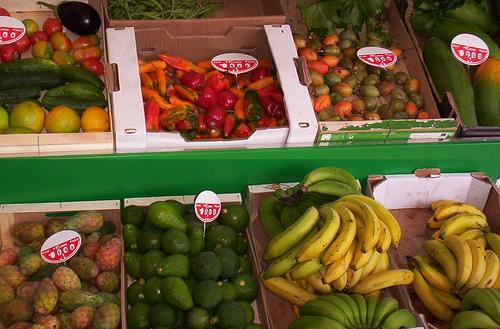Organic foods and products are harvested or created according to strict standards. Buying these products is often the best choice for your health and the environment. Organic items can be expensive, though, and it’s sometimes hard to see why buying something organic is any better than buying a traditional product. In many cases, however, organic products offer a clear advantage to consumers, and there are many ways to save money on these products and make them just as affordable as their competitors.
Step 1
Take stock of what your household uses on a regular basis and which of the products you normally use are available in organic versions. Certified organic foods are sold in nearly all grocery stores, and you may be able to replace some of your normal groceries with organic products. Think about organic clothing and other products as well. If you’re not sure what’s available, try looking through the aisles of a local natural-foods or organic grocery store. These stores stock many organic and fair-trade products in addition to regular grocery items, and the employees can likely answer any questions you have about buying organic products.
Step 2
Take a list along with you, and replace several of your usual groceries with organic items. If you’re on a tight budget, consider what you might be able to replace without stretching your dollars too far. Many organic foods may be slightly more expensive than generic store brands, but nearly the same price as competitor brands. When buying fresh produce, choose organic products that you will likely eat raw. It’s possible to ingest pesticides found in nonorganic fruits and vegetables, but organic apples, berries, peppers and other foods are all free from pesticides. Organic products such as onions, for example, may not be quite as necessary, as their outer layers can be peeled away before using them.
Step 3
One good option for obtaining organic produce without purchasing it at the grocery store is buying a half-share or full share of a CSA (community-supported agriculture) farm’s produce. Many of these farms grow certified organic goods, and others harvest according to organic practices even if they are not yet certified. Farmers’ markets are also good sources for finding organic foods and other organic products. Market produce is often cheaper than produce found in the grocery store, so you can save money by buying fresh, in-season fruits and vegetables there. You can also consider growing some of your own food.
Step 4
When shopping, consider the impact of organic products on the environment. These products are generally considered to have a much more positive impact on the planet than other comparable products. Organic goods do not use pesticides or chemicals and won’t alter the Earth around them. In addition, they use less energy to produce, are more sustainable and use less waste.





